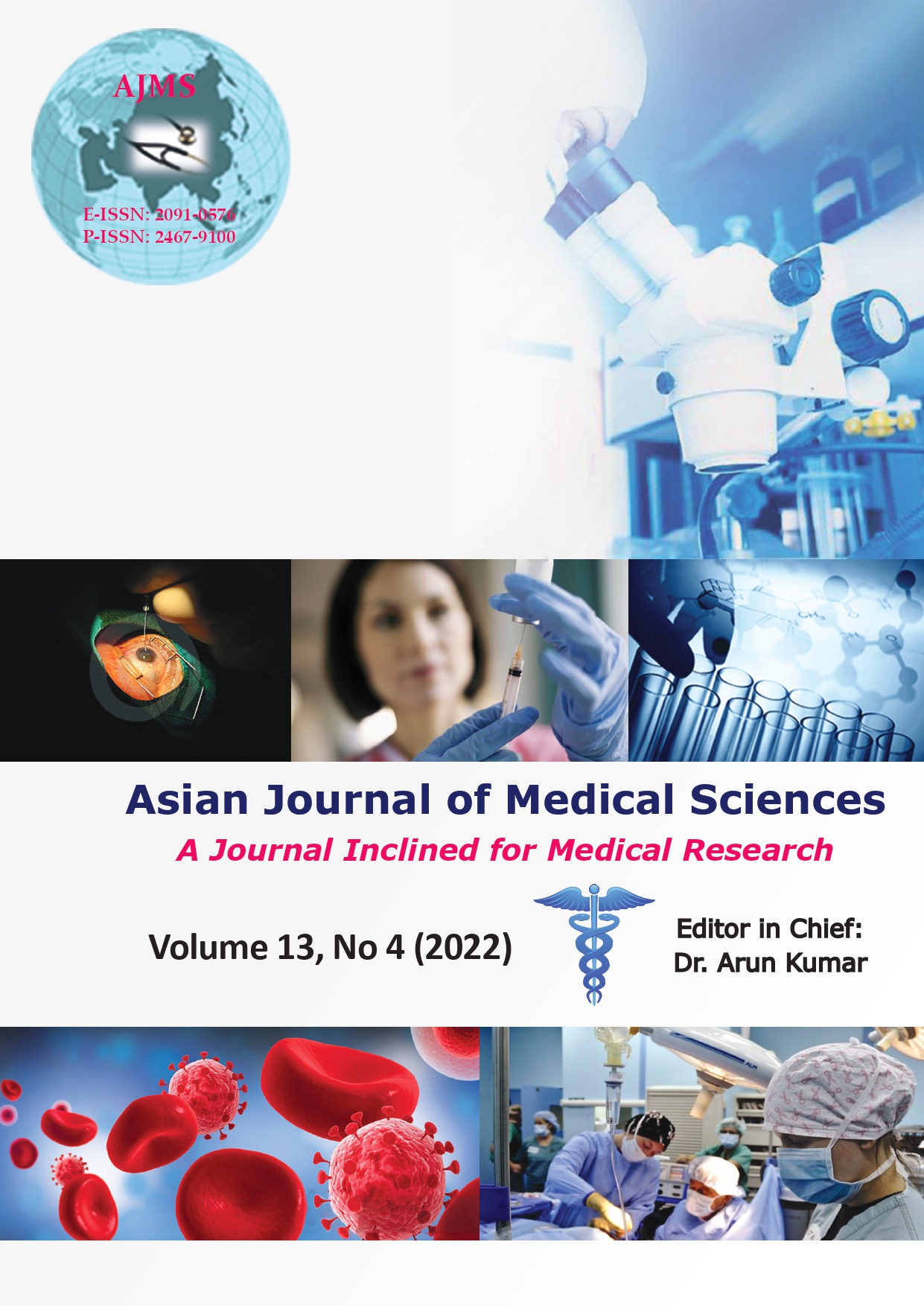Evaluation of perceived stress and coronavirus-specific anxiety among hospitalized COVID-19 patients – A cross-sectional study
Keywords:
Anxiety, COVID-19, anxiety, COVID-19, perceived stressAbstract
Background: COVID-19 pandemic enmeshed all people across the globe in myriad of problems and adversely affected their physical and mental health. Among all, patients who had been infected with COVID-19 might be at higher risk of psychological distress for obvious reasons.
Aims and Objectives: The aim of the study was to find out the prevalence and level of perceived stress and coronavirus-specific anxiety in patients affected by COVID-19.
Materials and Methods: This cross-sectional study was conducted on in-patients of a COVID-19 designated hospital who were about to get discharged. After screening the eligible patients with GHQ-12, patients who gave consent were interviewed with perceived stress scale (PSS)-4 and coronavirus anxiety scale.
Results: Mean age of the study population was 41 years and majority (54.4%) belonged to 40–60 years of age. Slight preponderance of females (54.1%) noted and17.4% lost their source of income and encountered acute financial crisis. Mean duration of stay in the hospital was 10.2 (±4.4) days. Mean perceived stress and coronavirus-specific anxiety were 9.6 (±2.2) and 10.39 (±3.1), respectively. Loss of a family member due to COVID-19 infection, active COVID-19 infection in any family member, poor social support, and financial crisis were the factors correlated with higher PSS scores.
Conclusion: Psychosocial factors contributed significantly for the higher level of perceived stress in COVID-19 patients in our study.
Downloads
Downloads
Published
How to Cite
Issue
Section
License
Copyright (c) 2022 Asian Journal of Medical Sciences

This work is licensed under a Creative Commons Attribution-NonCommercial 4.0 International License.
Authors who publish with this journal agree to the following terms:
- The journal holds copyright and publishes the work under a Creative Commons CC-BY-NC license that permits use, distribution and reprduction in any medium, provided the original work is properly cited and is not used for commercial purposes. The journal should be recognised as the original publisher of this work.
- Authors are able to enter into separate, additional contractual arrangements for the non-exclusive distribution of the journal's published version of the work (e.g., post it to an institutional repository or publish it in a book), with an acknowledgement of its initial publication in this journal.
- Authors are permitted and encouraged to post their work online (e.g., in institutional repositories or on their website) prior to and during the submission process, as it can lead to productive exchanges, as well as earlier and greater citation of published work (See The Effect of Open Access).




